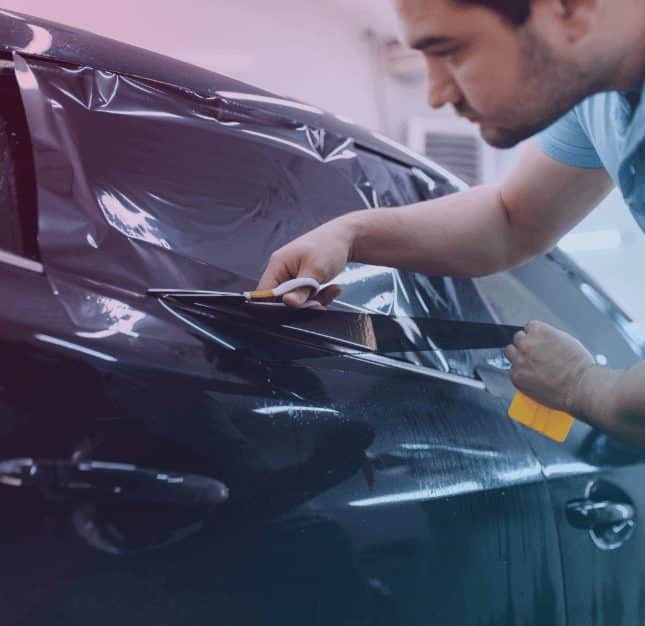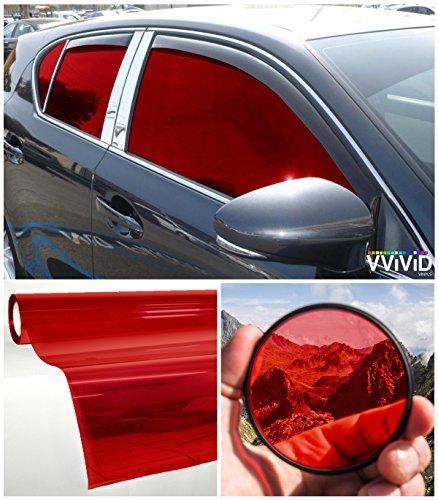A Comprehensive Guide to Comprehending Vehicle Window Color and Its Advantages
Auto window tinting serves more than just an aesthetic objective for vehicles. It offers different types, each with unique functions and advantages. Comprehending these alternatives, together with legal laws and upkeep pointers, is vital for any kind of vehicle owner. The advantages might greatly boost driving comfort and vehicle longevity. As one checks out the subtleties of window tinting, the inquiry develops: what kind of tint is finest suited for private demands?
Recognizing Automobile Home Window Tint: What It Is and Just how It Functions
Automobile window tint acts as a safety barrier that boosts automobile aesthetic appeals while giving useful advantages. This slim movie is related to the indoor surface of automobile windows, decreasing glare and obstructing harmful ultraviolet (UV) rays from the sunlight. By filtering system sunlight, vehicle window color aids to manage the indoor temperature level of the car, leading to raised convenience for travelers and minimized dependence on air conditioning.Additionally, it shields the vehicle's inside from fading, protecting both furniture and control panel materials. The color can additionally improve personal privacy, making it more difficult for outsiders to see inside the automobile. Specific kinds of home window tint can increase security; in the occasion of a mishap, the film helps hold destroyed glass together, decreasing the danger of injury from flying fragments. In general, automobile home window color serves both practical and aesthetic purposes, making it a popular choice amongst vehicle proprietors.
Sorts Of Home Window Tint: An Overview of Options
When taking into consideration window tint options, several types are available, each with unique qualities. Colored, metalized, and ceramic window tints offer varying levels of warmth denial, UV defense, and aesthetic charm. Recognizing these differences can help lorry proprietors make educated options based upon their demands and choices.
Colored Window Tint
Dyed home window tint represents a popular selection amongst automobile owners looking for a efficient and affordable way to improve their car's visual appeals and privacy. This kind of tint is produced by placing a layer of color in between an adhesive layer and a protective layer, resulting in a darkened appearance that lowers glow and boosts aesthetic convenience. While dyed window tint successfully blocks dangerous UV rays, it might not provide the very same degree of warmth being rejected as other color kinds. In addition, its color can discolor gradually, potentially diminishing its performance. Despite these drawbacks, colored home window color remains popular for its cost-effectiveness and capacity to offer a streamlined, elegant look to numerous automobile designs.
Metalized Home Window Tint
Metalized window color uses a balance of design and functionality, making it a popular option among car proprietors. This sort of tint includes metallic fragments within the movie, enhancing both visual appeal and warmth denial. The reflective quality of metalized color helps to minimize glow and enhance privacy, while likewise supplying UV security, which safeguards the automobile's interior. In addition, metalized home window color can enhance home window strength, possibly preventing shattering throughout mishaps. Nonetheless, it is necessary to note that the metallic parts can hinder electronic signals, such as general practitioner and mobile phone reception. On the whole, metalized window tint gives a reliable option for those seeking a combination of look, sturdiness, and sun security for their vehicles.
Ceramic Home Window Tint
Ceramic window tint stands for an advanced option in the range of auto home window films, using distinct benefits over traditional colors. Unlike dyed or metalized movies, ceramic tints make use of innovative ceramic bits, which successfully turn down heat and UV rays without jeopardizing exposure. This innovation ensures that automobiles stay cooler, reducing reliance on air conditioning and enhancing fuel efficiency. In addition, ceramic home window tints are less most likely to conflict with digital tools, such as general practitioner or mobile signals, making them a useful selection for modern-day lorries. Their durability and scratch resistance add to a longer life-span contrasted to various other kinds of tints. Overall, ceramic home window tint provides exceptional efficiency, comfort, and protection, making it a favored choice for critical vehicle owners.
Benefits of Auto Home Window Color: Beyond Looks
While many individuals associate vehicle window color with improved style, its benefits prolong much beyond simple looks. One substantial benefit is warm reduction; home window color can block approximately 99% of damaging UV rays, keeping the indoor colder and protecting upholstery from fading. This not only enhances comfort throughout heat but also decreases dependence on cooling, resulting in enhanced fuel efficiency.In enhancement, car window color supplies an included layer of privacy and safety and security. Colored windows make it challenging for outsiders to see inside the car, which can discourage burglary and shield prized possessions. Additionally, several colors strengthen the glass, reducing the possibility of smashing in the occasion of an accident, consequently enhancing safety.In enhancement to these functional advantages, auto home window color can likewise add to glare reduction, improving visibility for passengers and vehicle drivers alike. This diverse technique to convenience and security makes window color an important financial investment for vehicle proprietors.
Lawful Factors To Consider: Tinting Rules by State
Before committing to vehicle window color, vehicle proprietors have to browse a complex landscape of tinting policies that vary by state. Each state has details legislations governing the allowable levels of tint darkness and reflectivity for different windows, including windshields, front side windows, and back windows. These laws often include visible light transmission (VLT) percentages, which determine just how much light can pass via the colored glass.Some states permit darker colors on back windows while restricting front side and windshield tints for security factors. In addition, specific states might call for a certificate from the manufacturer to verify conformity with tinting regulations. Breaching these guidelines can cause penalties, required elimination of the tint, or both. It is crucial for automobile owners to research their state's laws extensively to assure lawful compliance before setting up window tint. This diligence can save money and time in the lengthy run.
Selecting the Right Color: Variables to Think about
When picking the appropriate window color for a car, several vital aspects enter play. Color darkness levels, UV defense scores, and conformity with lawful guidelines are important considerations to assure both aesthetic appeals and functionality. Reviewing these facets will certainly help people make an enlightened choice that satisfies their needs and sticks to regional regulations.
Color Darkness Levels
Choosing the suitable color darkness level is necessary for achieving the wanted equilibrium between visual appeals and capability in automobile window tinting. Different states have differing legal regulations pertaining to tint darkness, which can impact the option. Generally, tints are determined in percents, with reduced percentages indicating darker shades. Darker colors provide enhanced personal privacy and a sleek look however can reduce presence, especially at night. Conversely, lighter tints preserve an even more open feel, making certain sufficient presence while still supplying some heat and glare decrease. People must consider their driving routines, local legislations, and individual preferences when choosing. Eventually, the best tint darkness level improves the vehicle's appearance while guaranteeing security and conformity with legal standards.
UV Defense Rating
Tint darkness degrees play a substantial role in the general performance of vehicle window tinting, best site but an additional important element to assess is the UV defense score of the chosen color. This rating indicates the percent of damaging ultraviolet rays that the tint can obstruct. Top notch colors frequently supply 99% or more UV security, guarding travelers and the automobile's inside from sun damages. Davinci of Michigan. Long term exposure to UV rays can lead to skin troubles and fading of upholstery, making a high UV protection score vital for health and long life. When selecting window tint, consumers ought to prioritize this rating alongside darkness levels to guarantee maximum comfort and security while driving. Recognizing these variables help in making an educated choice when buying vehicle home window tinting
Legal Rules Conformity
Understanding neighborhood legal policies is crucial for any person considering car window tinting. Each state or region has particular laws regulating the allowed levels of tint darkness and reflectivity for different home windows. These guidelines commonly specify the noticeable light transmission portion, identifying exactly how much light can pass with the tinted glass. Non-compliance can cause penalties, required removal of the color, or concerns during automobile evaluations. Furthermore, some areas might have constraints on the use of particular tinting materials, requiring consumers to choose products that satisfy safety and security criteria. It is crucial for automobile proprietors to investigate their neighborhood laws extensively prior to selecting window color to ensure compliance and prevent potential legal difficulties.

Installment Process: do it yourself vs. Expert Providers
Exactly how does one choose between a DIY installment and employing expert solutions for vehicle home window tinting? The option typically hinges on budget, experience, and preferred results. A do it yourself approach can be cost-effective, allowing individuals to minimize labor prices. It needs a particular degree of ability and understanding about the tinting process. Those who are careful and person may discover success with DIY packages offered in the market.Conversely, specialist solutions supply competence and premium products, guaranteeing a perfect finish. Professionals frequently guarantee their job, supplying peace of mind versus prospective issues such as gurgling or peeling off. In addition, they know with neighborhood regulations pertaining to tinting, which can be complex for the ordinary vehicle owner.Ultimately, the choice shows an equilibrium in between price, individual capability, and the expected quality of the tinting task. Each choice has its advantages, and the very you could look here best option relies on specific scenarios and preferences.
Upkeep Tips: Keeping Your Tint in Leading Condition

Frequently Asked Inquiries
Exactly How Long Does Home Window Color Generally Last on a Car?
Home window color usually lasts between 5 to ten years, depending on variables such as top quality, application, and environmental problems. Routine maintenance and correct treatment can extend its life expectancy, guaranteeing perfect efficiency and appearance with time.
Can Home Window Tinting Damage My Auto's Original Glass?
Window tinting, when used correctly, does not harm an automobile's initial glass. Nevertheless, inappropriate installation or low-quality products may result in concerns like gurgling or peeling, possibly impacting the glass's honesty over time.
Is Window Tinting Safe for All Kinds Of Autos?
Window tinting is normally safe for most vehicles, supplied the movie follows regional guidelines and is appropriately applied. Some customized vehicles may require particular considerations, making it necessary to get in touch with experts before setup.
Will Window Tinting Gap My Vehicle Guarantee?
The question of whether window tinting spaces an auto warranty frequently depends on the producer's plans. Generally, if the color does not damage the car, guarantees normally continue to be undamaged. Seeking advice from the dealership is advisable.
Can I Remove Window Tint Myself if Needed?
Removing home window tint oneself is possible, but it calls for mindful interest to avoid harming the glass. People must utilize suitable tools and strategies to assure an effective removal without leaving glue residue or scratches behind. While colored home window tint effectively obstructs damaging UV rays, it may not offer the very same level of warmth being rejected as other color types. Ceramic home window tint stands for a sophisticated alternative in the spectrum of automotive home window films, offering home distinctive advantages over traditional colors. Prior to committing to automobile window tint, vehicle proprietors must browse a complex landscape of tinting guidelines that vary by state. These policies often consist of noticeable light transmission (VLT) portions, which determine just how much light can pass through the tinted glass.Some states allow darker tints on rear home windows while restricting front side and windshield colors for safety factors. Color darkness levels play a substantial role in the total effectiveness of vehicle window tinting, however another crucial factor to examine is the UV protection score of the picked tint.